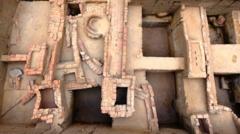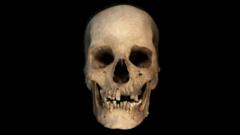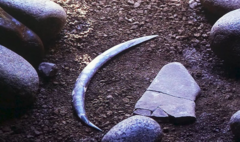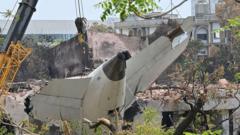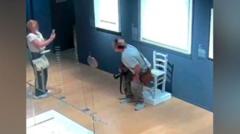Six years after its discovery in Vadnagar, Gujarat, a historic skeleton remains without a proper museum, as bureaucratic disputes hinder efforts to secure its housing, leaving it exposed to the elements.
Ancient Skeleton Remains in Limbo: Bureaucratic Delays Leave Historic Find Unhoused
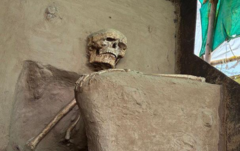
Ancient Skeleton Remains in Limbo: Bureaucratic Delays Leave Historic Find Unhoused
A 1,000-year-old skeleton unearthed in India still awaits a permanent home despite its archaeological significance, mired in red tape.
An extraordinary archaeological find in Vadnagar, Gujarat, continues to languish without a proper museum home, six years after its significant discovery. The skeleton, believed to be a thousand years old and buried in a meditative position, was unearthed by archaeologist Abhijit Ambekar in 2019. Although it is a unique find, akin to only three other similar discoveries in India, persistent bureaucratic disputes have delayed its relocation to a museum.
Abhijit Ambekar, leading the Archaeological Survey of India (ASI) in Mumbai, discovered the skeleton in a pit while excavating the historically rich site in Vadnagar, the birthplace of Prime Minister Narendra Modi. The Solanki period relic has its right arm resting on its lap and left arm suspended, showcasing its burial position, representative of ancient practices that could offer insights into ancestral lifestyles.
Despite the skeleton’s archaeological value, it remains unsheltered, currently housed in a makeshift tarpaulin structure nearby the newly opened Archaeological Experiential Museum. The current state of affairs has sparked outrage among locals who feel the skeleton, a compelling piece of history, deserves better care and protection. "How can we claim to honor our history when our most treasured find is left under a plastic roof?" said local resident Jesang Thakor.
The ongoing disagreement stems from differing claims of ownership between the Gujarat government and the ASI. While the ASI maintains control over the skeleton, local government officials argue that it should have been transferred to a museum with other artifacts. Pankaj Sharma, director of the Directorate of Archaeology and Museums, stated that the skeleton was not transferred due to procedural oversights.
As the community awaits a resolution, the skeleton continues to draw local curiosity, with residents advocating for its appropriate preservation and display. “We believe this find could attract tourists, bringing recognition to Vadnagar. It should be exhibited alongside our historical treasures," remarked Bethaji Thakor, emphasizing the need for a swift end to bureaucratic delays in protecting this invaluable symbol of India's past.
Experts like Ambekar hope that the skeleton will soon find its rightful home in a museum equipped with controlled temperature and humidity settings to prevent damage, allowing it to be appreciated for generations to come. As the discussion continues, residents and historians alike are deeply concerned about the future of this significant relic, advocating for its preservation and rightful recognition.

